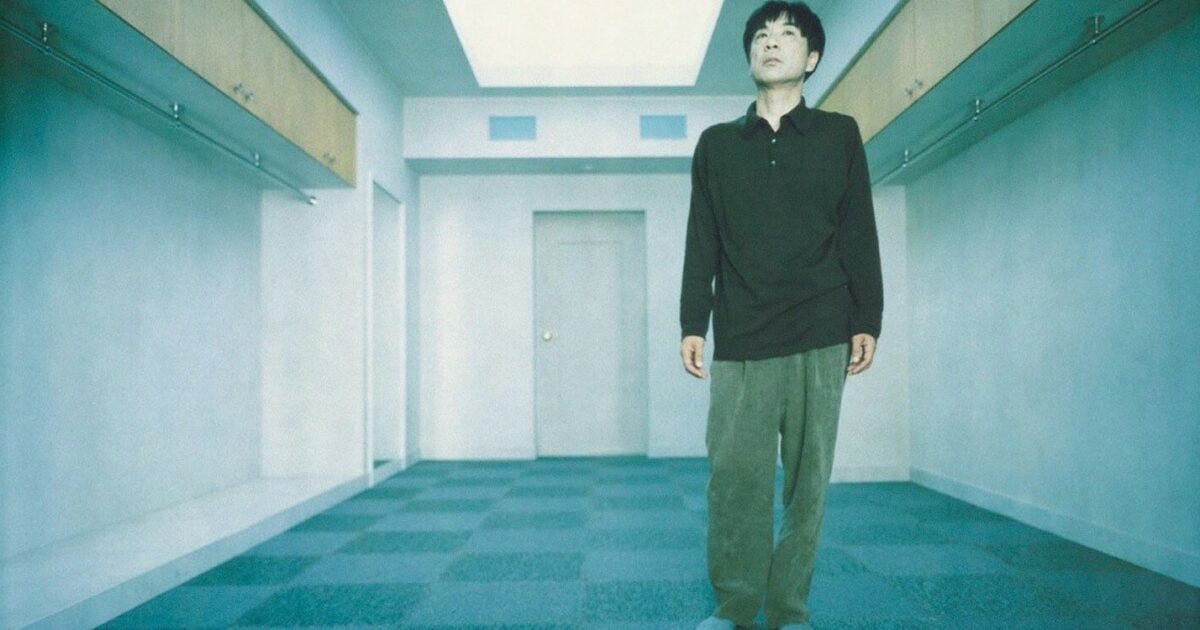2005 Revisited: TONY TAKITANI
A few days ago on Bluesky, I joked about my growing inability to accurately identify the time frame within which I saw a movie—coulda been 2-3 years ago, coulda been earlier this year, coulda been some time in the early 2000s. This observation about my glitchy memory prompted my friend and former podcast co-host Josh Spiegel to remark, “This sounds similar to Doug’s 1st Movie Syndrome”—a reference to the fact that once, on the podcast, I claimed to be seeing the animated feature for the first time, whereupon Josh proceeded to quote from the review of the movie I’d written 20 years earlier.
The point of this preamble is to explain why I opted to launch 2005 Revisited—an examination of my experience of 20-year-old movies now, compared to when I first encountered them—with Tony Takitani, director Jun Ichikawa’s adaptation of a 2002 New Yorker short story by Haruki Murakami. Because while it was included on the top 10 list I published on Letterboxd, it is also a movie where, if my life 48 hours ago depended on me being able to describe literally any plot point or aesthetic quality about it, I would currently be dead.
To be clear, this is a statement about my own brain much more than it is a statement about the artistic qualities of Tony Takitani. It’s a lovely, melancholy piece of filmmaking about the titular character (Issei Ogata, whom I don’t think I’d encounter again until his fantastic performance in Scorsese’s Silence), who lives a mostly solitary life as the only child of a widowed jazz musician (also played by Ogata) until he meets and marries a woman named Eiko (Rie Miyazawa) whose one major flaw—she’s addicted to buying clothes—ultimately has an unexpected impact on their lives. [Spoiler alert, as you will find throughout my writing about these 20-year-old movies this year: Eiko dies in a car accident during one of her fevered relapses into shopaholism.]
Ichikawa relates the story almost entirely through omniscient narration (by Hidetoshi Nishijima) straight out of Murakami’s prose, with the characters occasionally continuing that narration by speaking in the third person about themselves. It’s a fascinating device in that it suggests a passivity in those characters, as though they’re being carried along by their personality traits to fates beyond their control. And that same idea carries into some of Ichikawa’s visual motifs, like the way camera tends to drift horizontally with a kind of casual inevitability.
There’s a bit of a shift, however, in the third act, which finds Tony advertising for a housekeeper who can also be a stand-in for his late wife and wear all of her clothes. He ultimately selects Hisako (also played by Rie Miyazawa), an under-employed woman whose response to Eiko’s room full of designer garments is to break down in tears. While I didn’t opt to time it with a stopwatch, that scene feels like Tony Takitani’s longest sustained take, and also the longest sustained stretch during which the characters speak in their own voices rather than as proxies for the narrator. It’s a moment that feels jarring in its emotional nakedness compared to the restrained moments that preceded it, and disconcerting because of the reason Hisako gives for her tears—not that she grieves for a woman who died so young, but because she’d never before been in the presence of so many beautiful clothes.
It was that moment that made Tony Takitani feel like something I’d embrace as one of the year’s best movies. There’s a sense there of the unique emotional pitch and unresolved feelings that can uniquely define short stories, in much the same way that I found in Julia Loktev’s The Loneliest Planet several years later. Yes, it’s a tale about loneliness and what people try to do to fill the holes in their lives, but mostly it’s a cinematic work that feels completely, uniquely itself, finding just the right structural and visual tools for the text at hand. It’s far too early to say whether it will end up on the revised top 10 list I’ll compile at the end of this year—but at least now I have a sense for what I was thinking 20 years ago.

